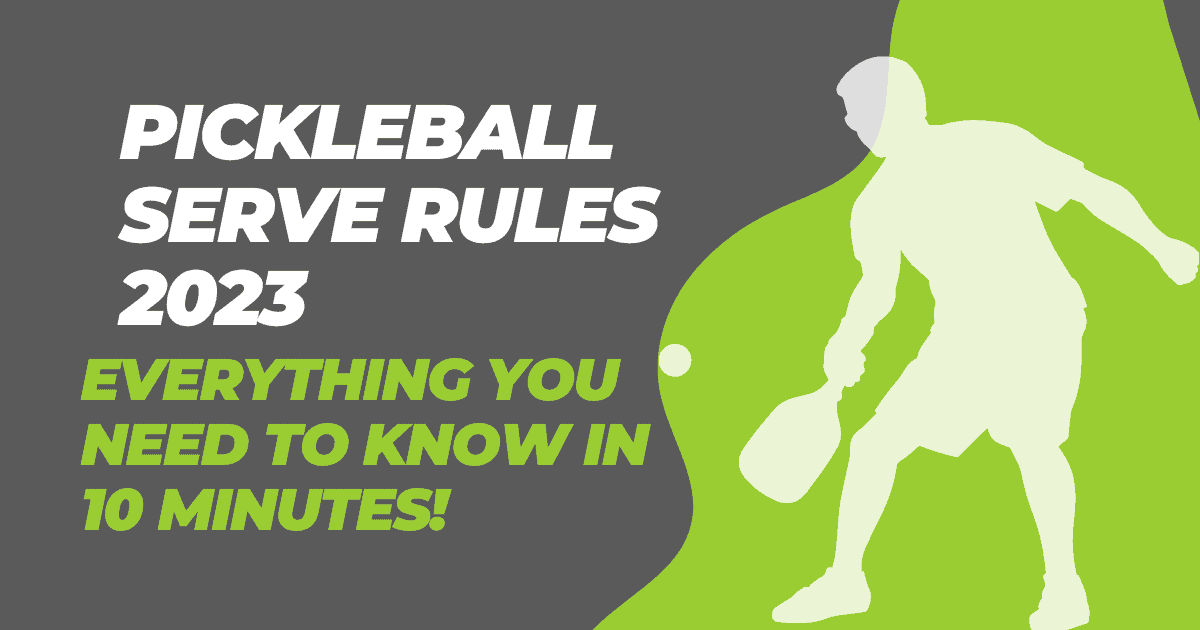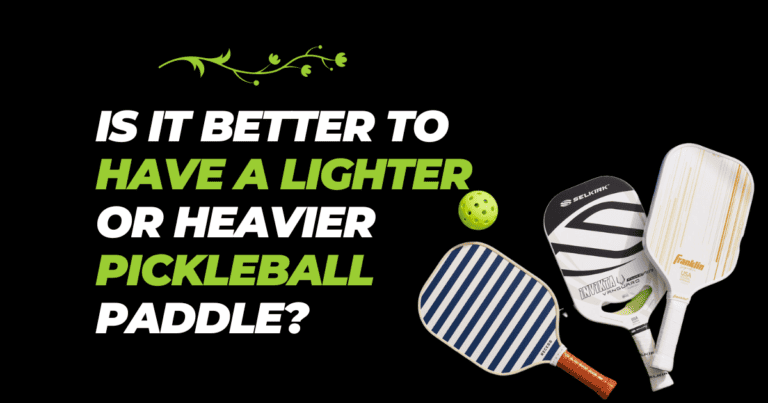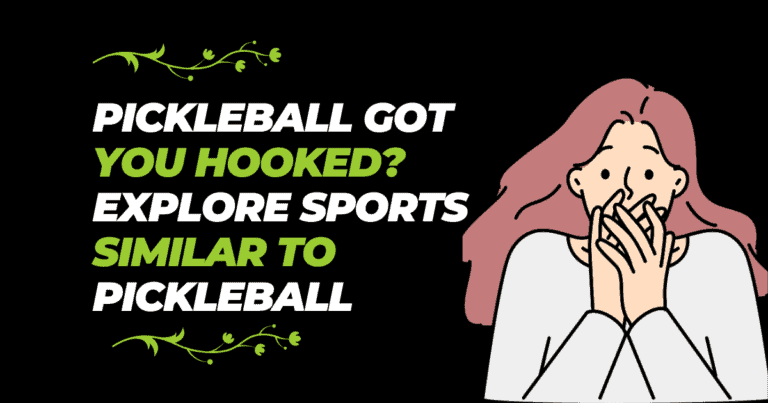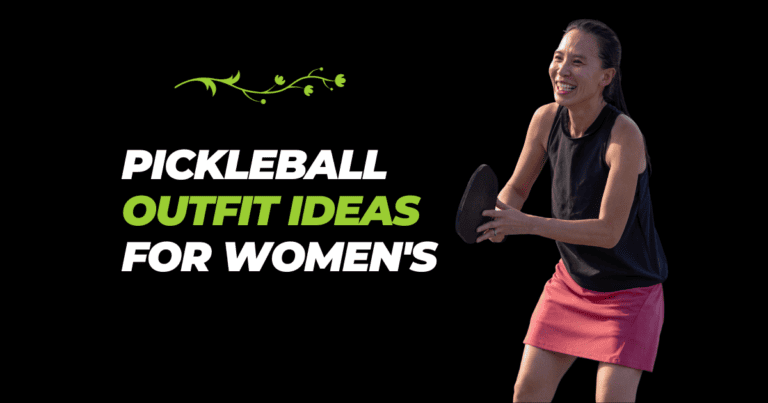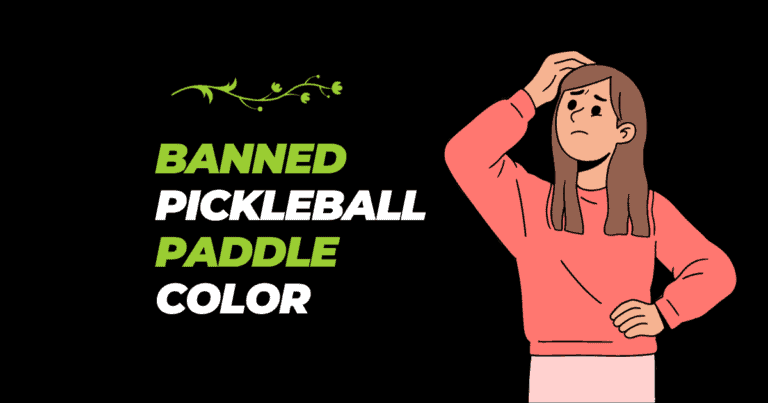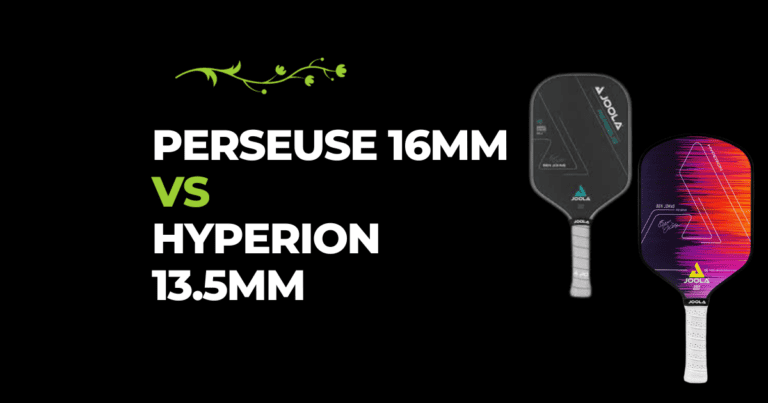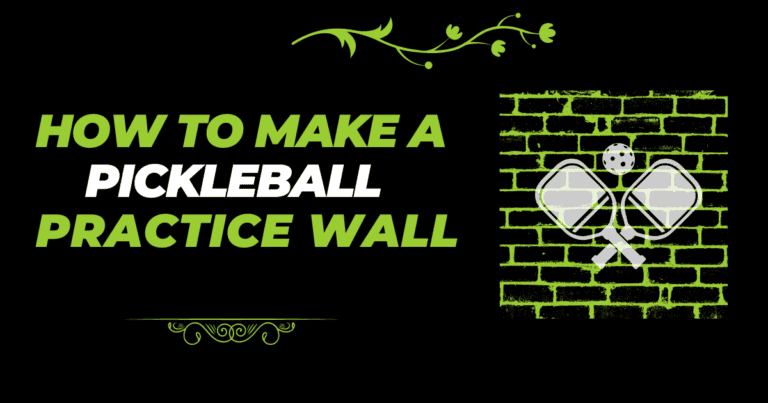Do you want to be the player that everyone turns to when the pressure is on? Well, the key to success on the pickleball court starts with one thing: the serve. The serve is the first shot of each rally, and a well-executed serve can give you a major advantage.
Now, imagine this scenario: stepping onto the court for an important match, ready to serve, and all eyes are on you. But, you suddenly realize that you’re not completely confident in serving (You might forget the rule or you are confused over the rules ). This not only disrupts your flow, but it also puts points and even the match at risk.
Don’t let this scenario be a reality for you.
In this article, we’ll cover everything you need to know about the 2023 Pickleball serve rules, including the essential serving rules, how to serve correctly, and tips to improve your game.
So, let’s dive in!
3 Basic Pickleball Serving Rules
Pickleball Serve Foot Fault:
The server must have at least one foot behind the baseline and within the court boundaries when serving. Stepping on or over the line results in a foot fault.
Pickleball Serve Height:
As you grip the paddle, Make sure to keep the highest point of its head lower than the bend of your wrist. This allows you to paddle efficiently and smoothly while avoiding any discomfort.
Pickleball Let Serve:
A let serve is when the serve touches the net but still lands within the opponent’s court. In this case, the serve is replayed.
Pickleball Serving Rules:
The Art of Upward Motion: Mastering Your Pickleball Serve
When it comes to pickleball, serving is a crucial aspect of the game that can make all the difference. To ensure that your serve is on point and in compliance with the rules, it’s essential to understand rule number 4.A.5. This rule states that the serve must be made using an upward motion, which means that your arm should be moving in an upward arc at the time of impact with the ball.
So, how can you master the art of upward motion in pickleball serving? The good news is that you don’t have to stick to just one technique. Whether you prefer a forehand or backhand serve, as long as your hand is moving upwards at the moment you make contact with the ball, you’re good to go.
Not only does the upward motion help keep the serve fair and within the boundaries, but it also opens up a world of possibilities for you to showcase your unique serving style. So, get creative and have fun!
Stay Low: The Key to Proper Pickleball Paddle Positioning
The key to a successful serve lies in keeping the pickleball paddle head below your wrist. This may sound difficult, but with a bit of practice, you’ll be serving like a pro in no time.
According to the official pickleball rules (rule number 4.A.6), your pickleball serve is only legal if the highest point of your paddle remains below the highest part of your wrist. This means that the paddle must be kept lower than where your wrist bends.
However, this rule is often violated, leading to heated debates and arguments on the court. Don’t let that happen to you! Make sure to brush up on the pickleball serving rules and avoid any unwanted on-court incidents. Get ready to serve up some serious excitement with a proper serving technique!
Pickleball Serving Cross-Court Rules:
- When playing pickleball, a cross-court serve means that the player has to hit the ball over the net and make it land in the other team’s court, which is across from them diagonally.
- The ball can touch the net, but it can’t land in the area marked by the no-volley zone or its line. It has to land within the space defined by the sidelines, baseline, centerline, and no-volley zone line.
- If the ball lands in the NVZ or on its line, it’s a mistake. But if it lands on the sideline, centerline, or baseline, it’s a good serve. (Rule 4.A.2)
Pickleball Serving Line Rules:
Step up to the serving line and get ready to play! But before you do, there are a few important rules to keep in mind to ensure a fair and enjoyable game.
First and foremost, remember to keep both feet behind the baseline as you serve. This is key to ensuring you have the right positioning to unleash your best shot. Just make sure not to touch or cross the baseline until after you serve, or it’s a no-go.
Next, always aim to serve diagonally across the pickleball court. This means targeting the diagonally opposite non-volley zone/service court with every serve.
At first, these rules may feel overwhelming, but don’t worry! With time and practice, You’ll be serving like a pro in no time!
Types Of Pickleball Serves
- Pickleball Volley Serve
- Pickleball Drop Serve
Pickleball Volley Serve:
According to the regulations of pickleball volley serve, the player who is serving must use a single hand to launch the ball and the movement of the arm must resemble an upward arc. Furthermore, the ball must be struck below the waist and the paddle should not exceed the wrist joint bend.
Pickleball Volley Serving Rules:
| Rule | Description |
| Arm Motion | The arm must be moving in an upward motion at the time the paddle hits the ball. |
| Paddle Height | Contact between the paddle and the ball cannot be made above waist level. |
| No Bouncing | The serve must be made without bouncing it off the pickleball court. |
| Paddle Head Height | The highest point of the paddle head must not be above the highest part of the wrist joint when it hits the ball. |
| One-Hand Release | Only one hand can be used to release the ball. |
| Visible Spin | If the ball is spun, the release must be visible to the referee and receiver. |
| Forehand/Backhand | Either a forehand or backhand motion is allowed. |
Pickleball Volley Serve Tips
| Tip | Explanation |
| Don’t hit a bad toss | If you don’t like your toss, don’t hit it. Once the score has been called, you have 10 seconds to serve so pick it up and toss it again. |
| Add spin | For more experienced players, add some spin to your serve. |
| High toss | Lift the pickleball up high or toss it before hitting it with your paddle. You should be able to hit the ball from a higher point of contact than if you just held it directly in front of you. This should give you more momentum to hit a stronger ball. |
Pickleball Drop Serve:
The server may drop the ball from any height they desire and then strike it after it bounces. It is suggested that the server should hold the ball out in front, at their desired height, to attain a higher bounce before hitting it.
Pickleball Drop Serve Rules:
| Rule | Description |
| Number of Bounces | There is no restriction on how many times the ball can bounce. |
| Bounce Location | There is no restriction on where the ball can bounce on the playing surface. |
| Visible Release | The release of the ball must be visible to the receiver and in matches with a referee, the release must be visible to the referee. |
| No Throwing | The ball cannot be thrown downward tossed or hit upward with a paddle. |
| Forehand/Backhand | A forehand or backhand swing can be used. |
| Paddle Height | The restriction of paddle height when swinging and connecting with the ball does not apply. |
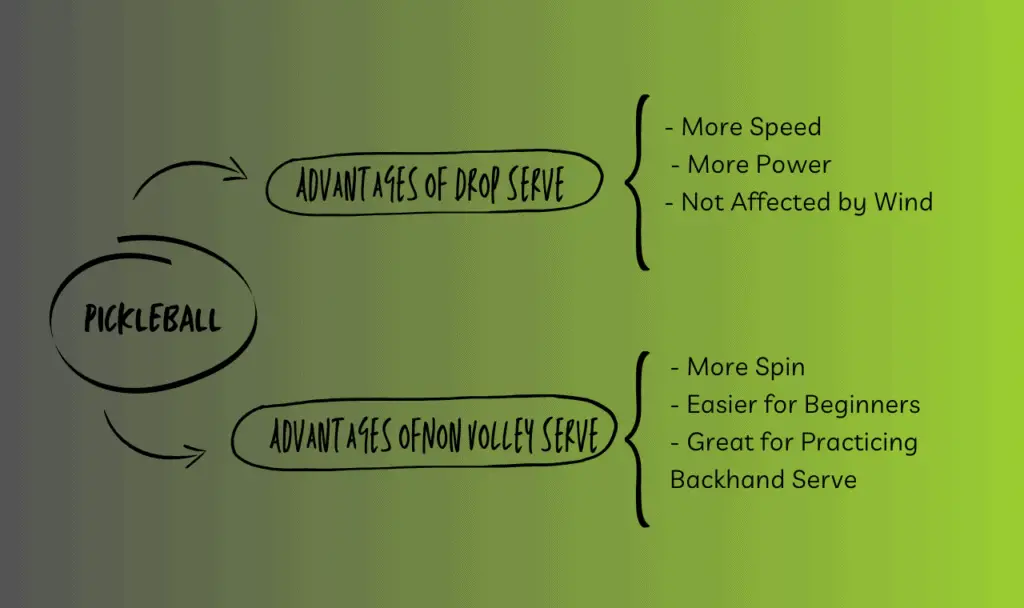
List of Pickleball rules on service faults
| Violation | Result |
| Touching baseline or service court with feet | Loss of serve |
| Touching imaginary extension lines of sideline or centerline | Loss of serve |
| Not touching ground behind baseline when serving | Loss of serve |
| Serving from wrong service court | Loss of serve |
| Illegal serving motion | Loss of serve |
| Ball lands outside service court or in non-volley zone | Loss of serve |
| Connecting paddle with ball before calling score | Loss of serve |
| Ball touches permanent object before hitting ground | Loss of serve |
| Ball touches server or partner before hitting the ground | Loss of serve |
| Incorrect player serves | Loss of serve |
| Hitting ball before calling score | Loss of serve |
| Requesting timeout or score confirmation after serving | Loss of serve |
| Ball does not land in correct service court | Loss of serve |
| Ball hit into net and does not land in correct service court | Loss of serve |
| Volleying first or second serve | Loss of serve |
Pickleball Receiving Faults:
Incorrect player hits the pickleball:
When a player from the receiving team hits the pickleball who is not the designated receiver, it is considered a fault. This is often a mistake when doubles teams are stacking.
Touching or interfering with the pickleball before it bounces:
If the receiving player or their partner touches the pickleball or interferes with its flight before it bounces, it is considered a fault. This can occur if the server intentionally serves the ball to hit the opposing player near the net (a “Nasty Nelson”) or if the served ball hits the receiving player beyond the baseline before bouncing.
Calling a timeout or confirming the score after the serve:
Once the pickleball has been served, the receiving player or their partner may not call the timeout or ask the referee to confirm the score. Doing so will result in a fault.
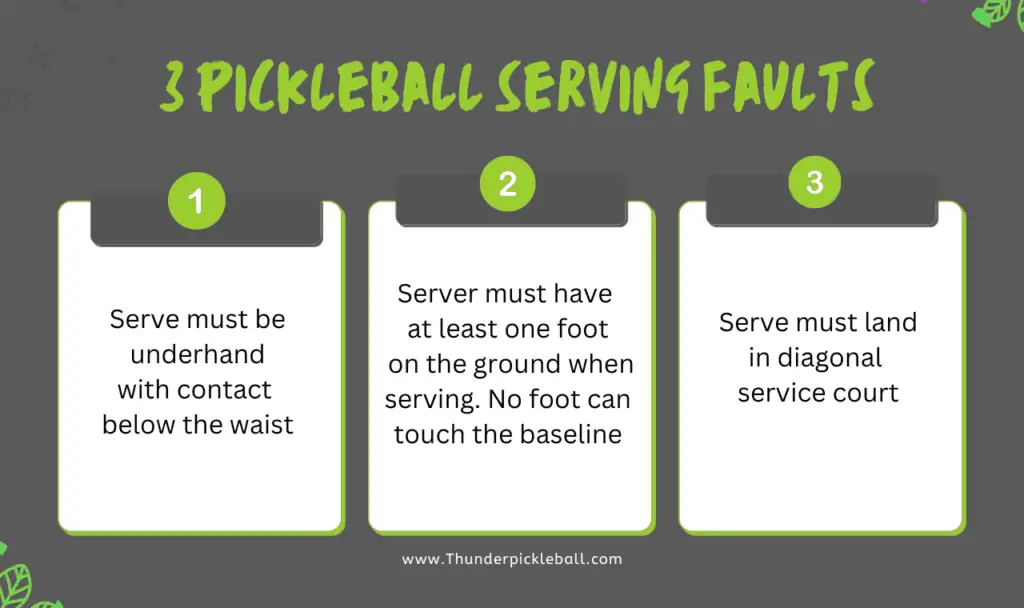
Scoring
Announcement of Score:
The first player to serve in the game announces the score at the beginning, such as “0-0 start” or “0-0-2.
Score Breakdown:
The score includes three numbers, the serving team’s score, the receiving team’s score, and the serving player’s (1 or 2). For example, a score of “1-4-1” means the serving team’s score: is 1, receiving team’s score: 4, and the first player to serve: 1.
Fault:
If a fault occurs, the serving position changes and the other team takes over as the server.
FAQs Pickleball Serving Rules:
What is an illegal serve in pickleball?
An illegal serve is simply a serve that breaks one of the specific rules of the game. How you can avoid illegal serve:
First things first, keep your feet behind the baseline during the serve, otherwise, it’s considered a fault and the point goes to the opponent team.
Next, pay attention to the rules of the volley serve or drop serve and make sure to hit the ball properly. Don’t just drop or fling the ball randomly!
Finally, aim for the diagonal quadrant on the opposite side of the court, and avoid landing the ball in the non-volley zone. This way, you can make your serve count and take your game to the next level.
But wait, there are a few more things to keep in mind! A serve can also be illegal if the ball hits the net, doesn’t cross the court, lands out of bounds, or worse, lands in the kitchen zone.
What is the 10-second rule in pickleball?
The 10-second rule in pickleball refers to the amount of time a team has to complete their serve. According to the official rules of pickleball, a team has 10 seconds to serve the ball after the score is called and the server is in position to serve. This rule is in place to keep the game moving and to prevent delays between serves.
If a team fails to serve the ball within the 10-second time limit, it results in a fault and a loss of serve. The opposing team will then get the opportunity to serve. It’s worth noting that the 10-second rule only applies to the serve and not to any subsequent shots during the point.
What is the best serve in pickleball?
The best serve in pickleball is the one that you can consistently execute with accuracy and that puts your opponents on the defensive. There are several types of serves in pickleball, and the best one for you will depend on your playing style, strengths, and weaknesses. So, it’s important to identify the strengths and the weaknesses of your opponents to figure out which serve will give you the edge on the court.
Can you lose on a serve in pickleball?
Yes, you can lose a point on a serve in pickleball if you commit a fault during your serve. There is a 10-second time limit for serving the ball in pickleball. If you exceed this time limit, it will result in a fault, and you will lose your serve.
Can you win on a serve in pickleball?
Yes, you can win a point on your serve in pickleball, and it is actually the only time that you can score a point. In pickleball, points can only be scored when the serving team wins the rally, which means that the ball must be served and returned by the receiving team before the serving team can score a point. If the serving team wins the rally, they score a point, and the same player serves again for the next point.
The game of pickleball is typically played to 11 points, and the team that reaches 11 points first wins the game, but the team must win by a margin of at least two points. So, if the score is tied at 10-10, the game continues until one team leads by two points.
Can you ace a serve in pickleball?
Yes, it is possible to ace a serve in pickleball. An ace is a serve that is so well-placed that the opponent is unable to return it, resulting in a point for the server. In order to achieve an ace, the server must serve the ball in such a way that it lands in the opponent’s court without being touched by the opponent.
What is a dead ball serve in pickleball?
A dead ball serve occurs when the server makes a fault, such as hitting the ball into the net or hitting it out of bounds. The point is immediately awarded to the other team, and the server must try again.
How many serve attempts are allowed in pickleball?
Only one serve attempt is allowed. If the serve is faulty, the point is awarded to the opposing team, and the serve goes to the other team. If the serve is good, the serve is in play, and the point can be won by either team.
Is it legal to spike in pickleball?
No, spiking is not legal in pickleball. The point of contact between the paddle and ball must be below the wrist, and hitting the ball with a downward motion above the navel is considered a fault.
What happens if the wrong person serves in pickleball?
If the wrong person serves in pickleball, it is considered a fault, and the serving team loses the serve and a point.
Can you let the ball drop on a serve?
You cannot let the ball drop on a serve in pickleball, you can catch the ball before it bounces on the ground if you need to reset for a better serve.
Who makes the pickleball serving rules?
The rules of pickleball are established and maintained by the International Federation of Pickleball (IFP). The IFP is the governing body of pickleball and is responsible for developing and promoting the sport around the world. The IFP sets the rules for pickleball, including the serving rules, and updates them as necessary to ensure that the game is played fairly and consistently at all levels. The rules are periodically reviewed and updated based on feedback from players, coaches, and officials to keep up with the changing nature of the sport.
Can you hit the ball back after a serve?
No, you cannot hit the ball back after a serve without first letting it bounce on the ground inside the correct service court.
Can the ball touch the net on a serve?
Yes, the ball can touch the net on a serve in pickleball, but only under certain conditions. If the ball hits the net and then lands inside the correct service court, it is considered a legal serve, and the point continues. However, if the ball hits the net and lands out of bounds or in the wrong service court, it is considered a fault, and the serving team loses the serve and a point.
Can you only score points when you serve the ball?
You can only score points when your team is serving the ball. This means that the serving team must win the rally to earn a point.
Are there lets in pickleball?
Yes, there are lets in pickleball. A let occurs when a served ball hits the top of the net and lands in the correct service court, or if the ball hits the net and then goes out of bounds or into the wrong service court. In this case, the serve is replayed without penalty, and the point does not count.
Are you allowed 2 serves in pickleball?
You are only allowed one serve, except in the case of a let serve. A let serve occurs when the serve hits the net and lands in the proper service court. If this happens, the serve is replayed and the player gets another opportunity to serve. However, this does not count as a second serve. If the second serve hits the net and lands in the correct service court, this is also considered a let serve and the serve is replayed once again. If a player faults on the serve or the serve lands out of bounds, the serve is over, and it is the other team’s turn to serve.
What Can You Not Do in the Kitchen In Pickleball?
When it comes to the kitchen or the no-volley zone, there are two big no-nos to remember. Number one: no standing in the kitchen and volleying. That means no matter how tempting that ball may be, if you step into the kitchen during a volley shot, you’re out. And number two: your serve cannot land in the kitchen. So keep your cool and keep your serve out of the no-volley zone, and you’ll be a pickleball master in no time.

